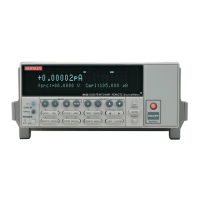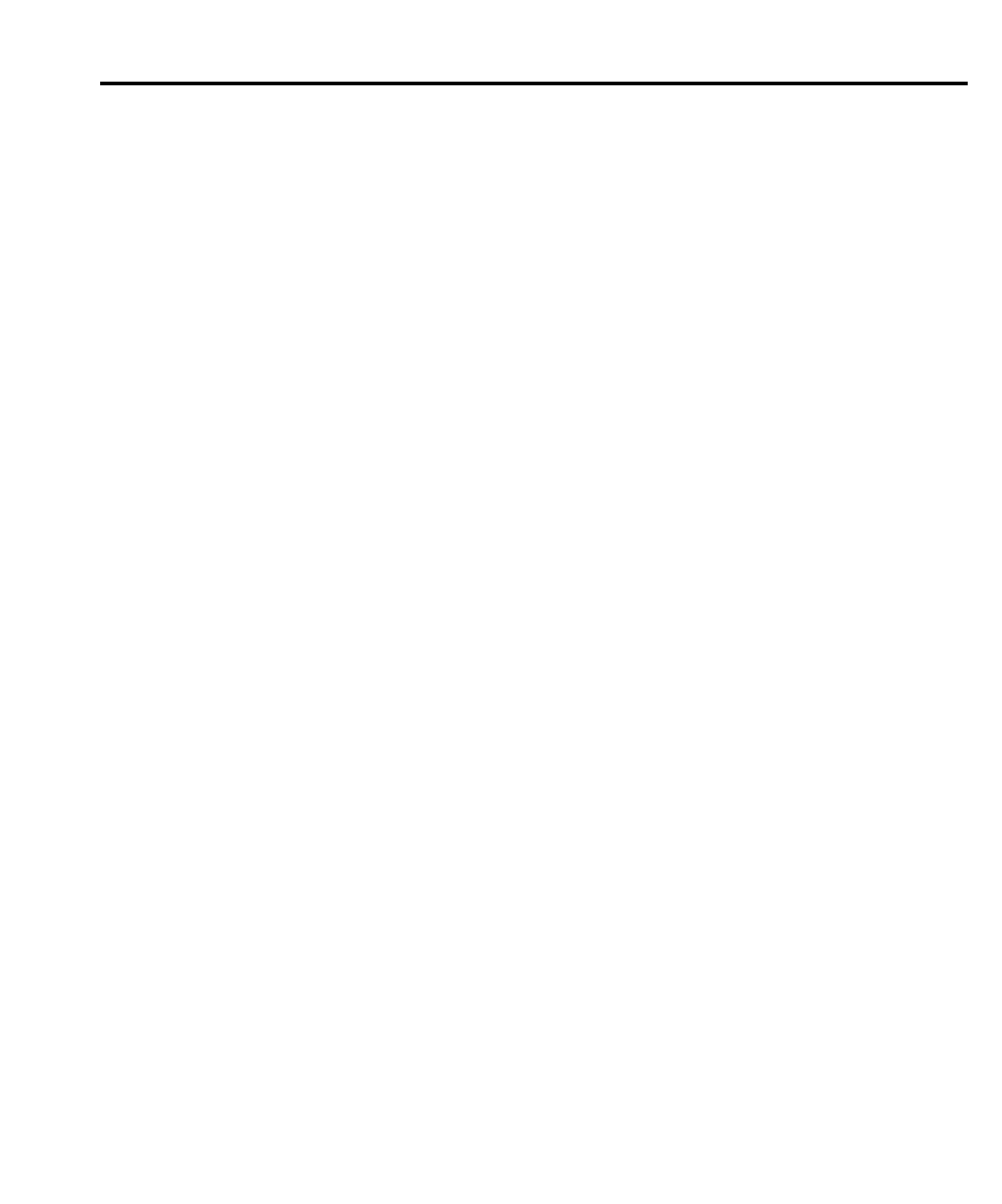SCPI Command Reference 17-85
:AUTO <b>
:SOURce2:CLEar:AUTO <b> Control auto-clear for digital output
Parameters <b> = 0 or OFF Disable auto-clear
1 or ON Enable auto-clear
Query :AUTO? Query auto-clear
Description This command is used to enable or disable auto-clear for the digital output
lines. When enabled, the output pattern will clear automatically after the
“pass or fail” output bit pattern of a limit test is sent to a handler via the dig-
ital output lines.
The :DELay command specifies the pulse width of the limit test bit pattern.
See the next command. After the delay period times out, the digital output
clears back to the output pattern programmed by the :TTL:LEVel command.
When auto-clear is disabled, the digital output pattern can only be cleared
by the :IMMediate command.
On power-up, auto clear is enabled.
See :CALCulate2 and Section 11 for details on limit tests.
:DELay <n>
:SOURce2:CLEar:AUTO:DELay <n> Set delay for auto-clear
Parameters <n> = 0 to 60 Specify delay (in seconds)
DEFault 100µsec delay
MINimum 0 sec
MAXimum 60 sec
Query :DELay? Query delay
:DELay? DEFault Query *RST default delay
:DELay? MINimum Query lowest allowable delay
:DELay? MAXimum Query maximum allowable delay
Description This command is used to set the delay for digital output auto-clear. This
delay determines the pulse width of the limit test output pattern as required
by the handler. After the delay, the output returns (clears) to the pattern pro-
grammed by the :TTL:LEVel command.
The delay actually defines the pulse width for line 4, which is used by cate-
gory register component handlers as the EOT (end of test) strobe. The pulse
width of the other three lines are 20µsec longer (10µsec before line 4 is tog-
gled, and 10µsec after line 4 is cleared). Skewing the timing on line 4 pro-
vides “setup” and “hold” time for category register component handlers.
See Section 11 for details on timing.

